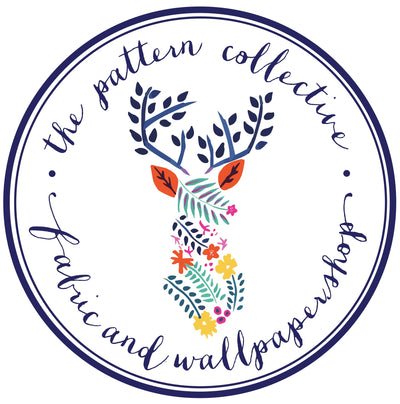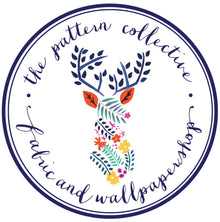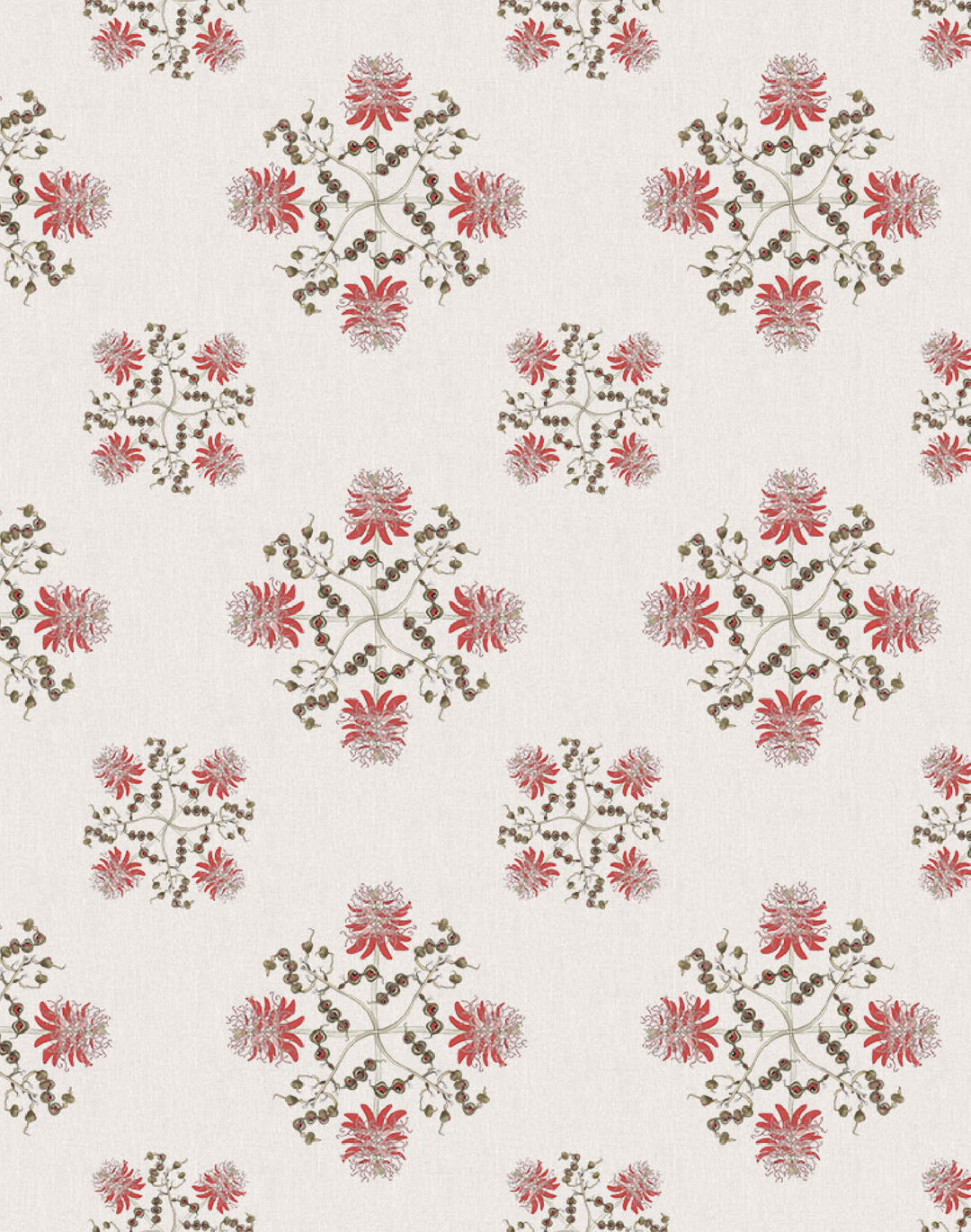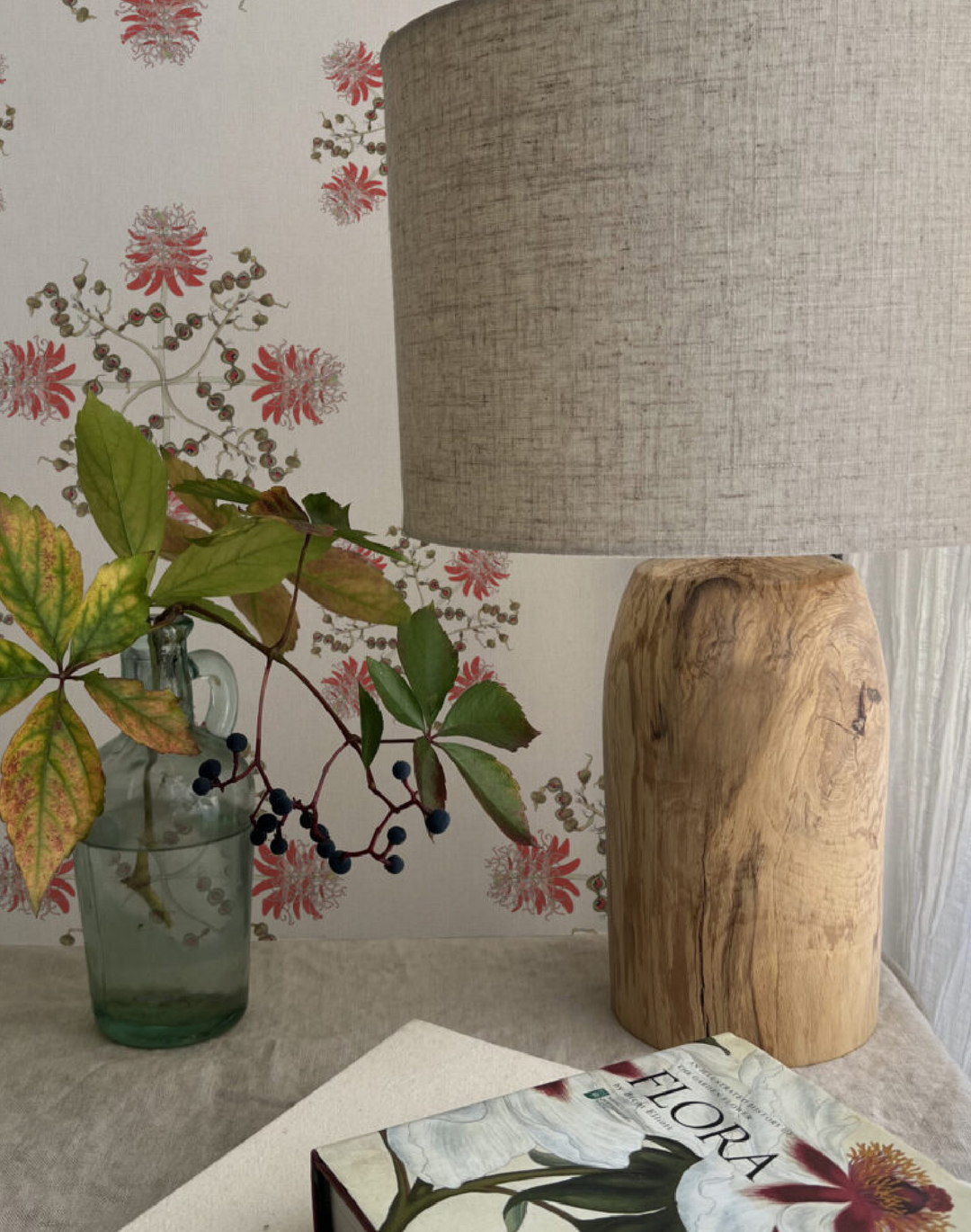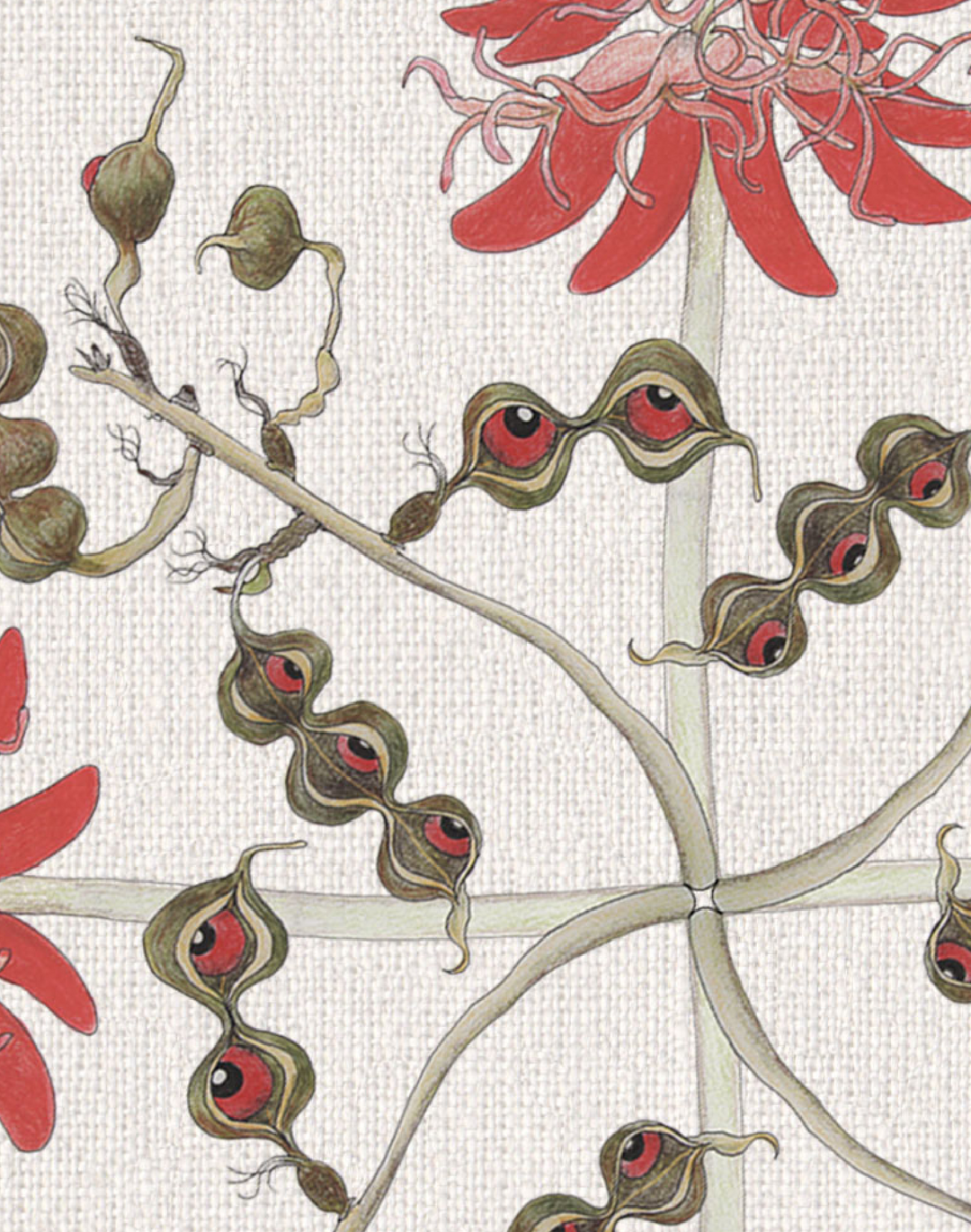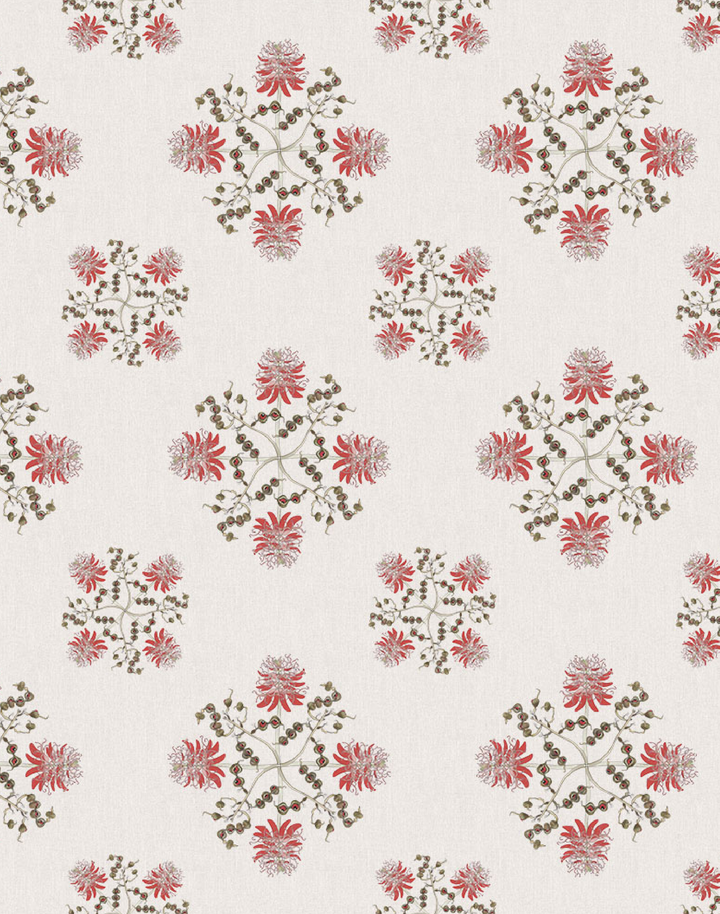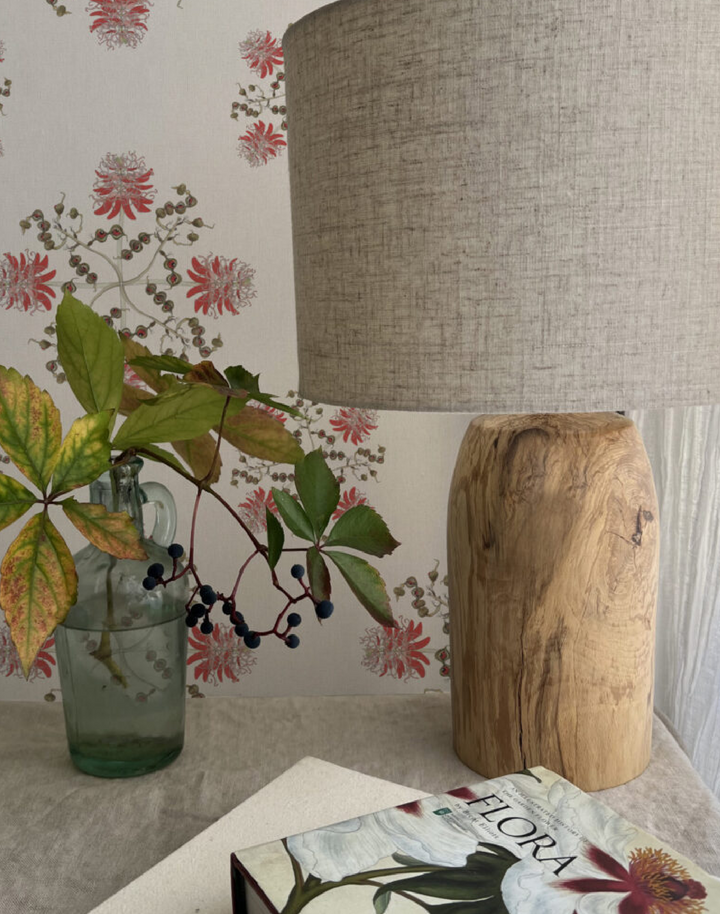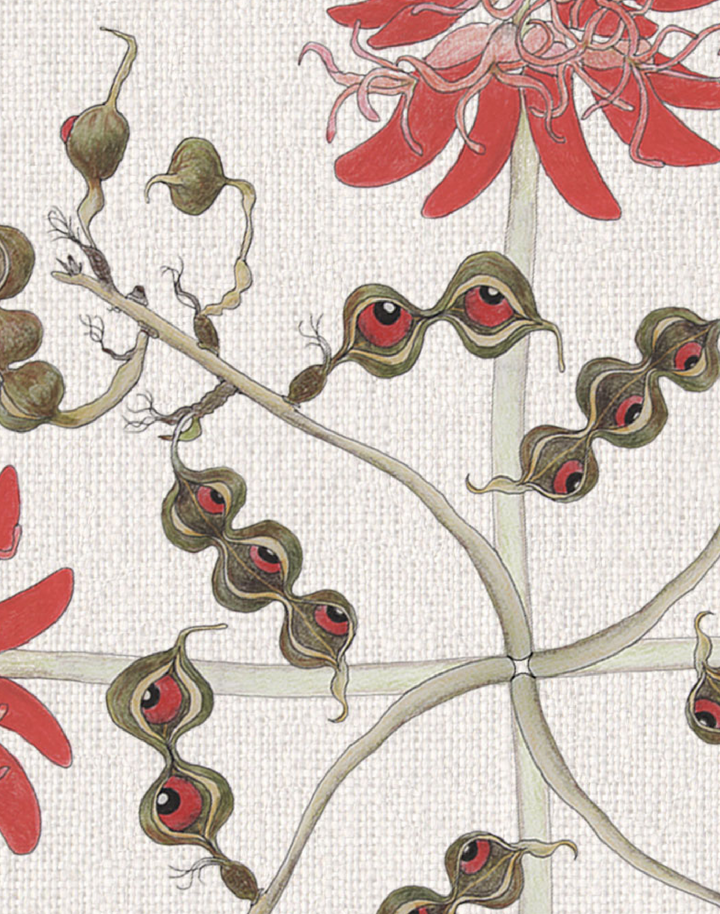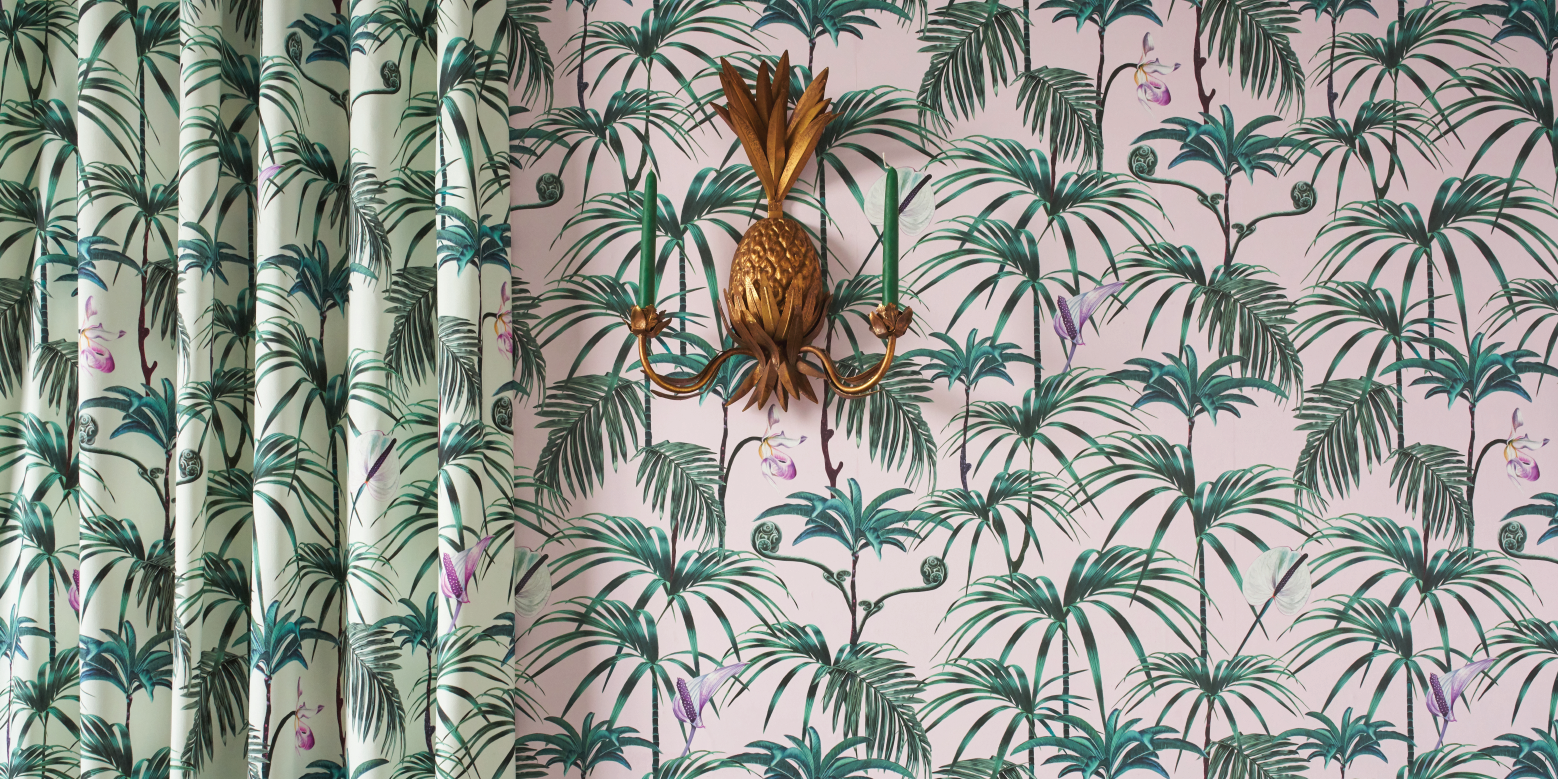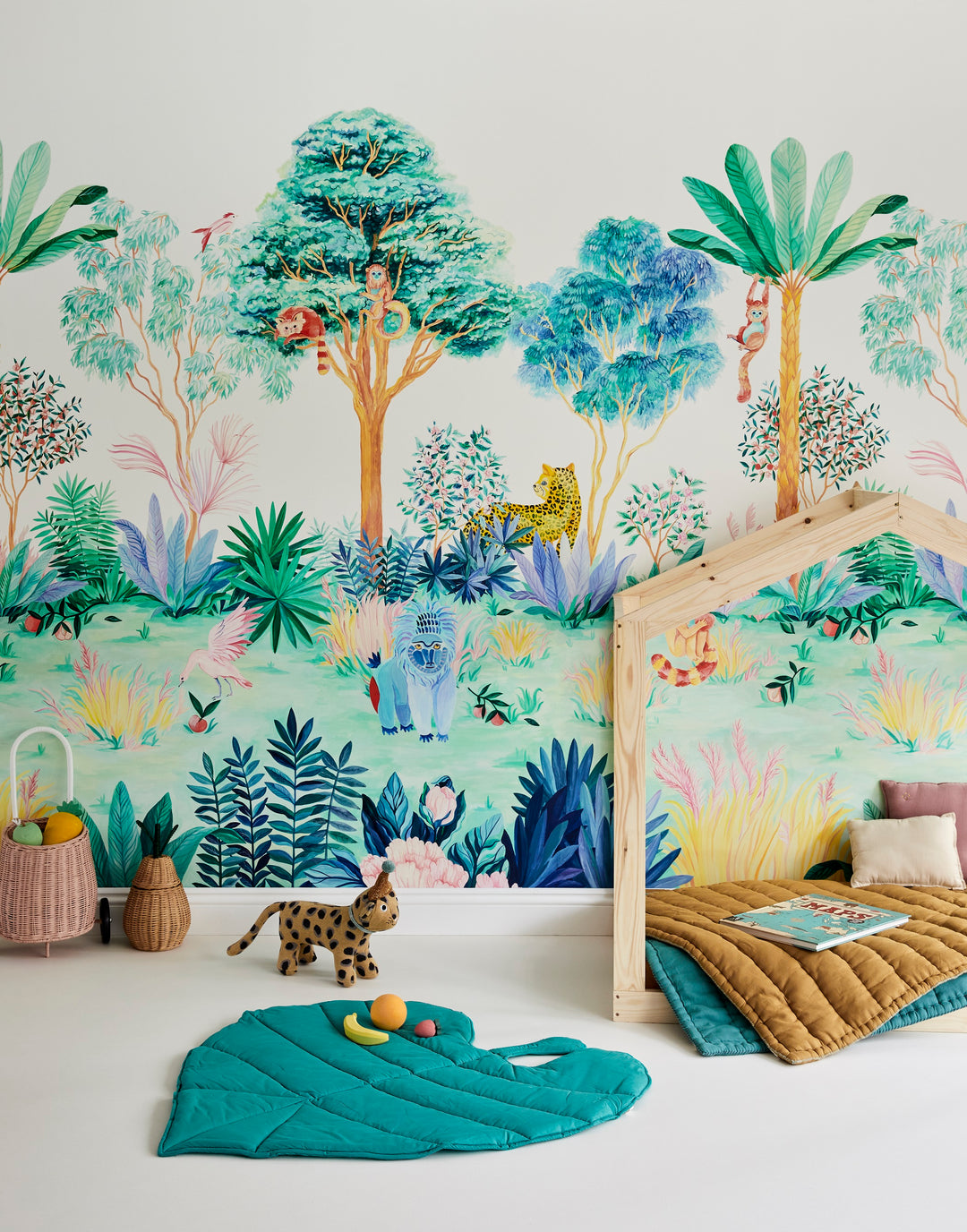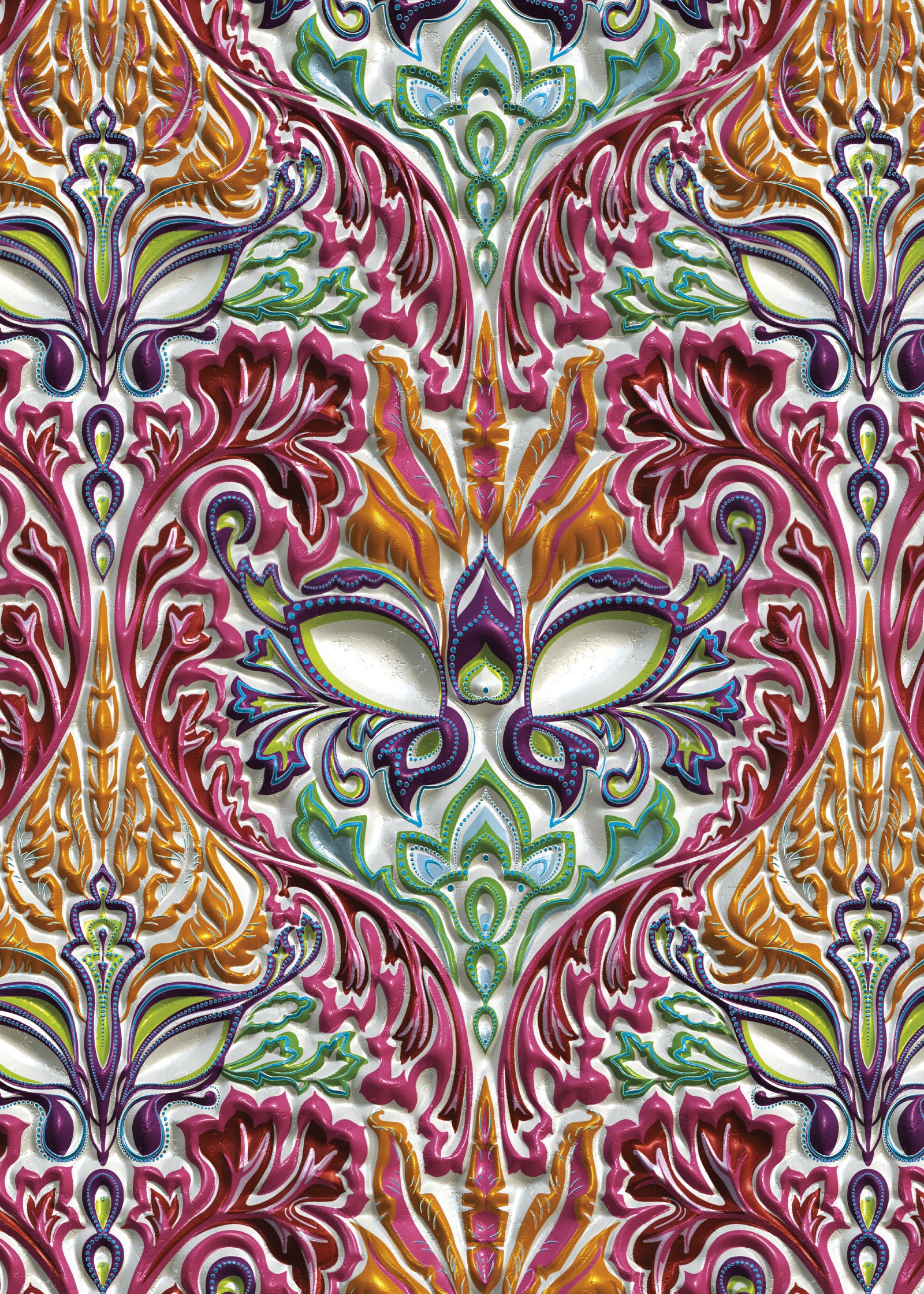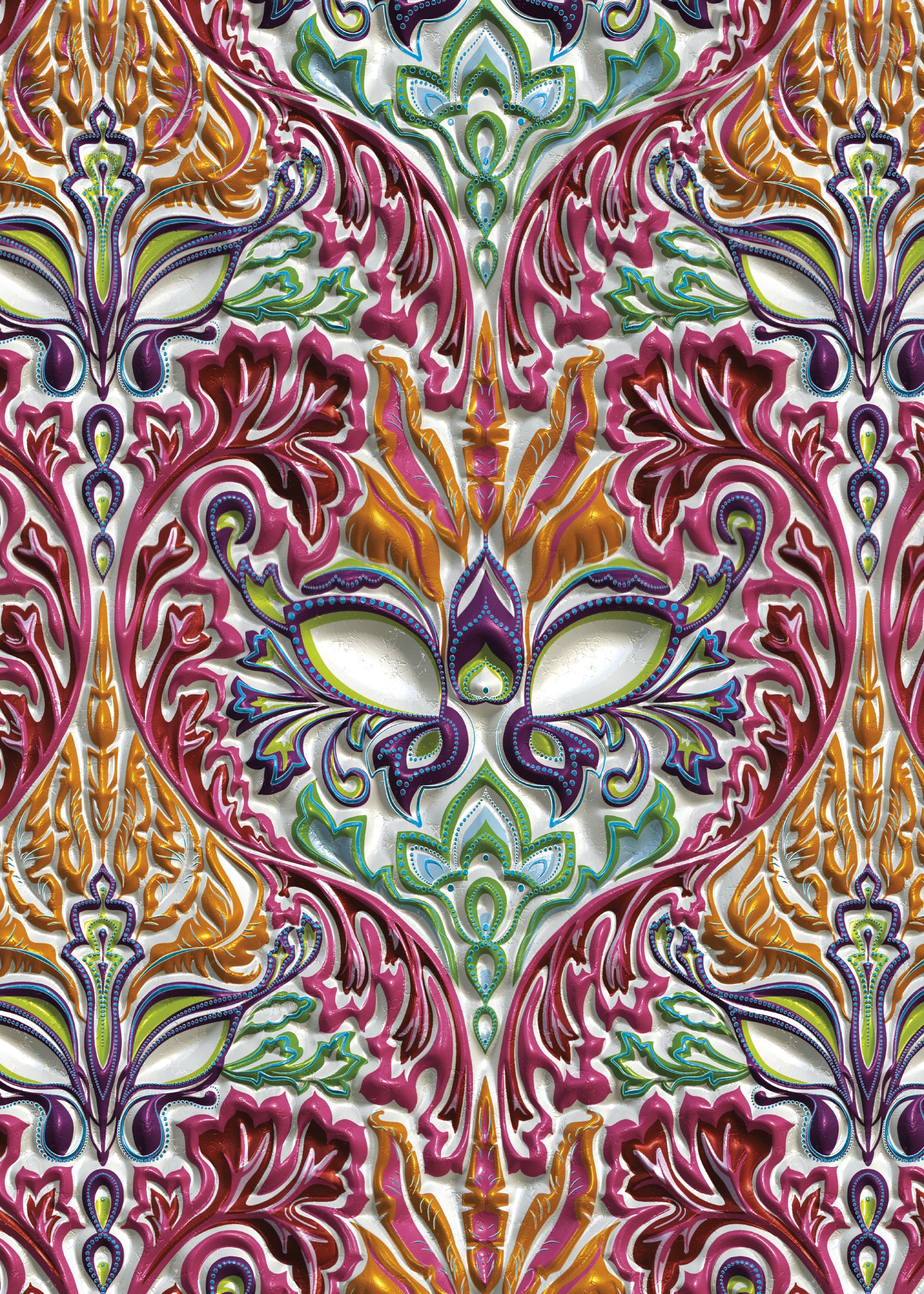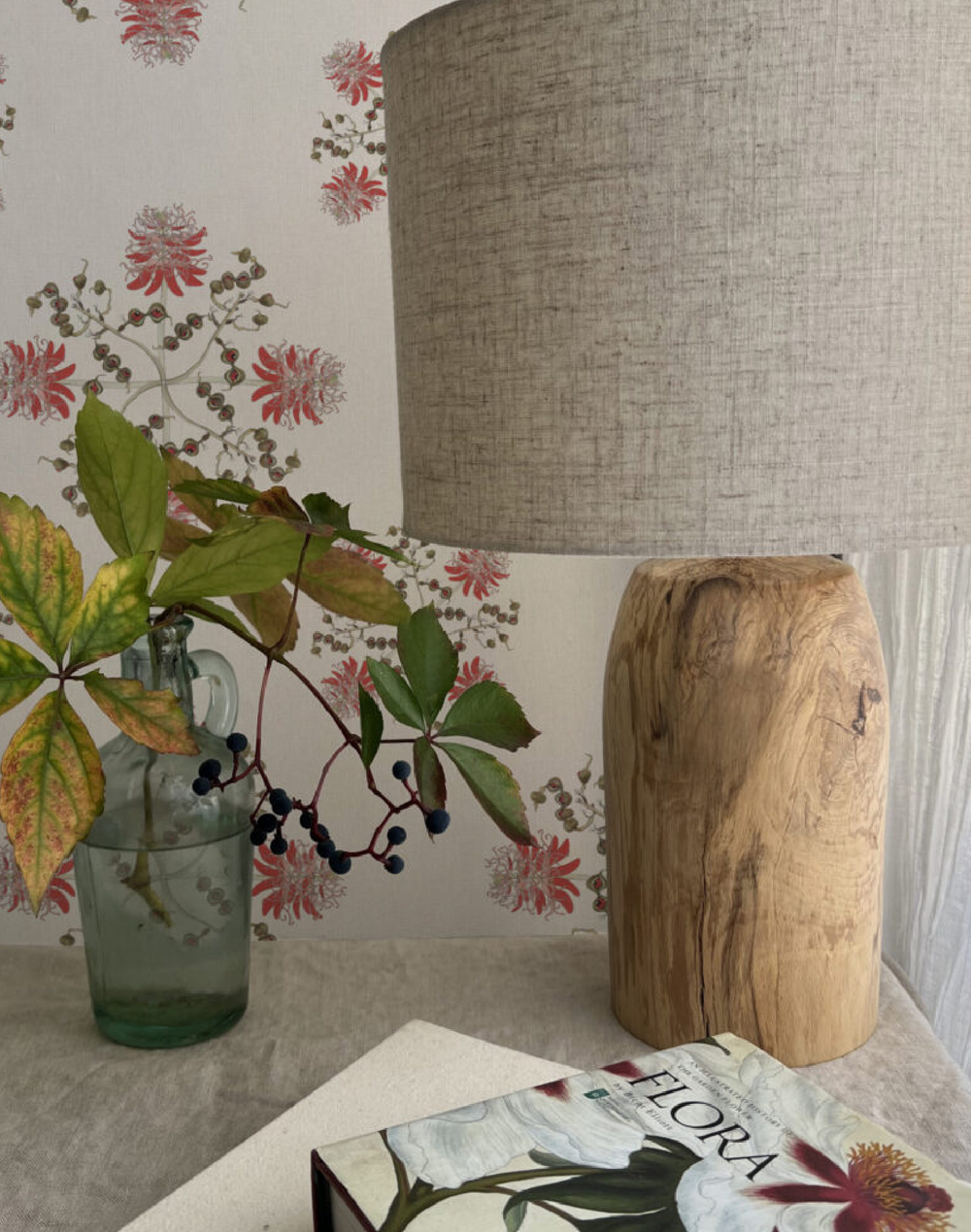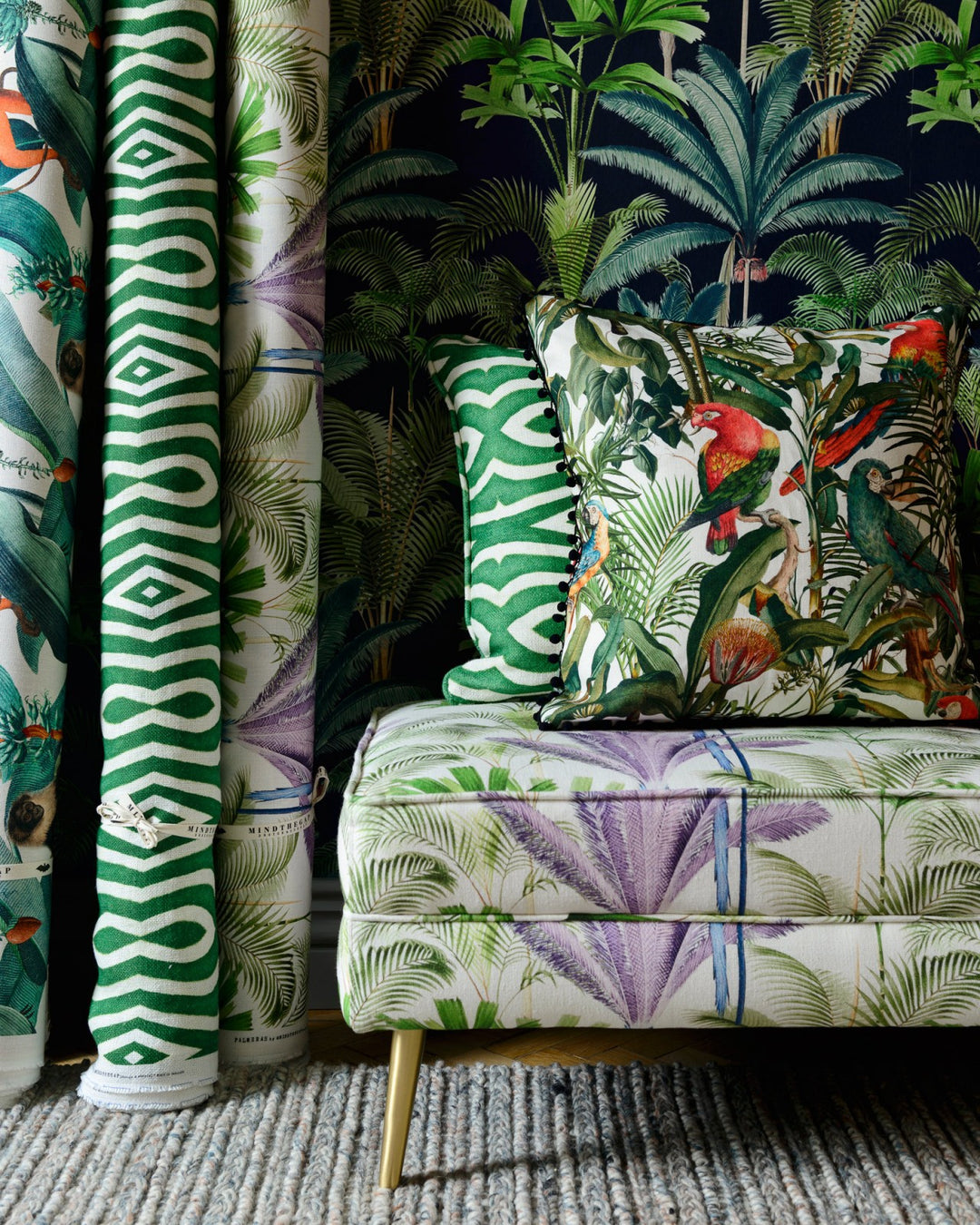Lucky Bean, Natural
Overview
Lucky Bean – Erythrina lysistemon is an African wonder tree that fertilises the soil, helps farmers time their planting with the appearance of the stunning red blossoms in Spring, makes live barbed fencing, provides black and red seeds for jewelry… As well as these uses, every part of the plant provides sustenance: the flowers give nectar to birds and bees, the leaves are eaten by creatures from rhinos to kudu, the flower buds are relished by vervet monkeys, and the bark is consumed by elephants and baboons. Even the roots are eaten by bush pigs. What a lucky bean.
With exquisite botanical detail, this design builds upon the growing passion in interiors for honoring the natural world. Furthermore, for every roll of wallpaper sold, 100m2 of critical wild habitat is preserved through World Land Trust.
Measurements
• Each roll is 27.6" x 10.9 yards
• Repeat: Straight match, 9.2" vertical repeat
Additional Notes
• Printed to order, approximate 3-4 week lead time.
• The designs are printed on Uncoated Non-woven 147gsm. This design will also be available on Coated Non-woven 147gsm. The uncoated wallpaper has a matt finish and vibrant but gentle, muted colors. The Coated wallpaper has a slight shine, is more wipeable and has deeper colors.
• Fire certified for both Europe and the USA. Classified to BS En 13501-1-1:2002, class B, s1, d0
Color Description
Multi colored illustration on a light background
Additional Info
Newton Paisley designs tell the stories of endangered and neglected species, whilst rejoicing in their extraordinary diversity and beauty. Their mission is to celebrate nature and inspiring people to create beautiful, biophilic home-habitats. As reported by Pattern Observer, flora and fauna make up fully 70% of the textile design market across fashion and home interiors, yet often these designs are lick-and-stick or lacking context in the natural world. Newton Paisley designs are different – full of geeky specificity, authenticity, narrative, love…. Each design tells stories of neglected and endangered species, and, even better, contributes towards the preservation of critical wild habitat.
